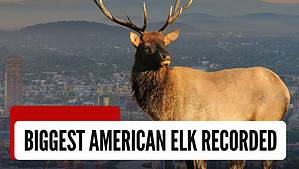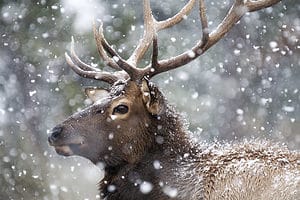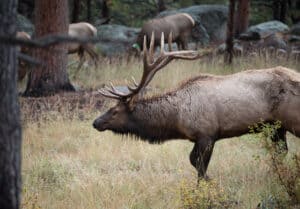Elk are majestic creatures. Sadly, they aren’t as common as they once were. While many factors contribute to their decline, habitat loss is one of them. Luckily, elk are somewhat adaptable and can live in several different habitats.
You can find elk in lush meadows surrounded by woods, dense forests, and rugged mountains. The elk in these diverse areas have slightly different survival tactics, and many elk may even more between environments depending on the time of year.
In this article, we’ll take a look at the major habitats this species is found in.
Mountain Forests and Meadows
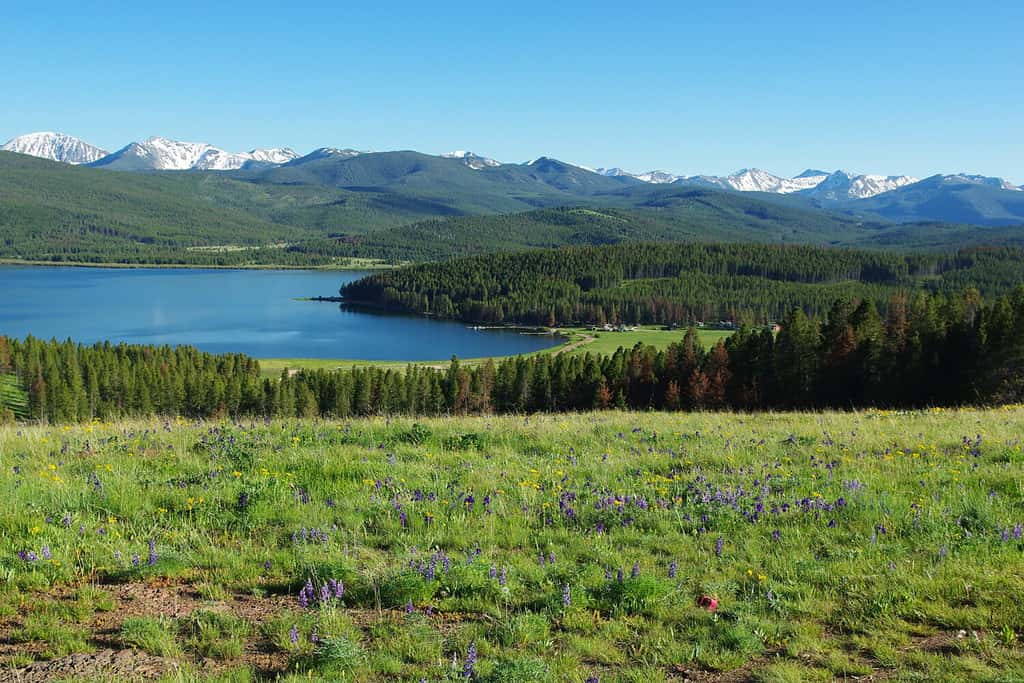
Land interspersed with meadows and forests offers the perfect habitat for elk.
©Claudio Del Luongo/Shutterstock.com
Elk are very large creatures and are not big fans of warmer weather. Therefore, they tend to seek refuge in upper altitudes during summer, especially in hotter climates. They’re pretty common in mountain forests and meadows, where they feed on wildflowers and grasses.
Elk need plains and meadows to eat in and forests for shelter. Therefore, depending on what they’re doing, they tend to move back and forth between these two areas during the day.
This species can thrive in forests made up of many types of trees. Deciduous forests often offer the most diverse foraging opportunities, and there may be many clearings where grasses are available. Coniferous forests are very dense, pushing elk to utilize meadows more frequently.
Elk will graze on grasses and shrubs along the ground of the forest or meadow. They will also consume twigs and leaves that they can reach. Most importantly, many elk use the cover of forests to hide from predators and get out of the elements. Elk cannot build houses like us, so they typically utilize forests for their shelter.
Aspen Groves
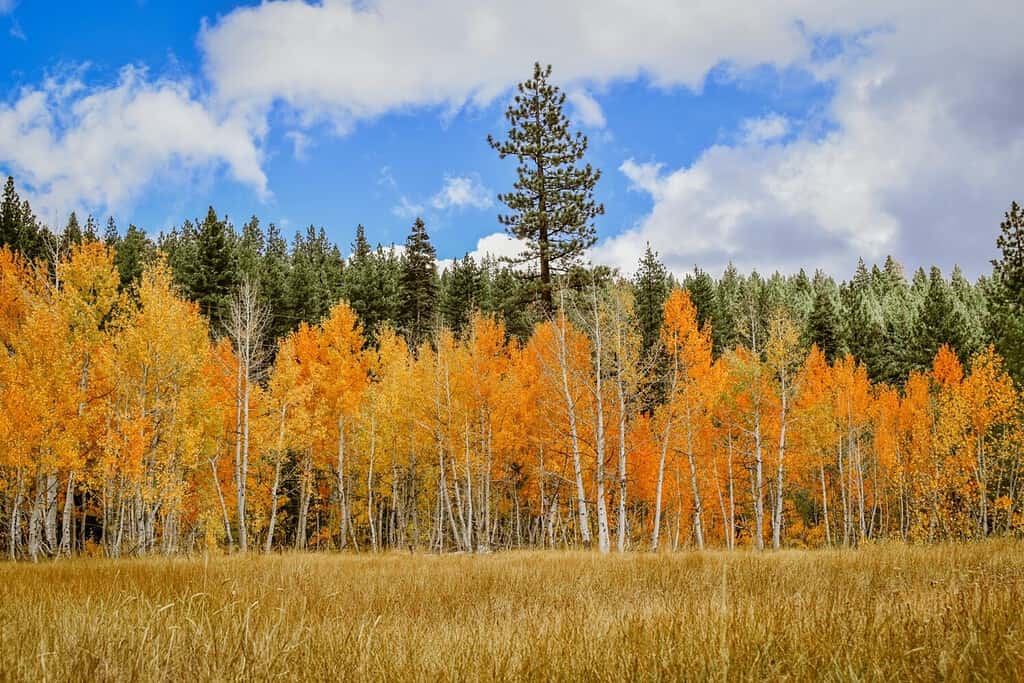
Aspen trees provide both protection and let enough sunlight through to let grasses grow.
©Robyn Havard/Shutterstock.com
You’ll also find elk in aspen groves, which are a bit different from mountain forests. Aspen groves offer an even mixture of sunlight and shade, so they usually have more grasses within the forest themselves. Therefore, unlike in conifer forests, elk can often find food within the forest and don’t necessarily have to eat in meadows.
Still, many elk will graze along the borders of aspen groves, where they can access the most food.
Marshy Meadows
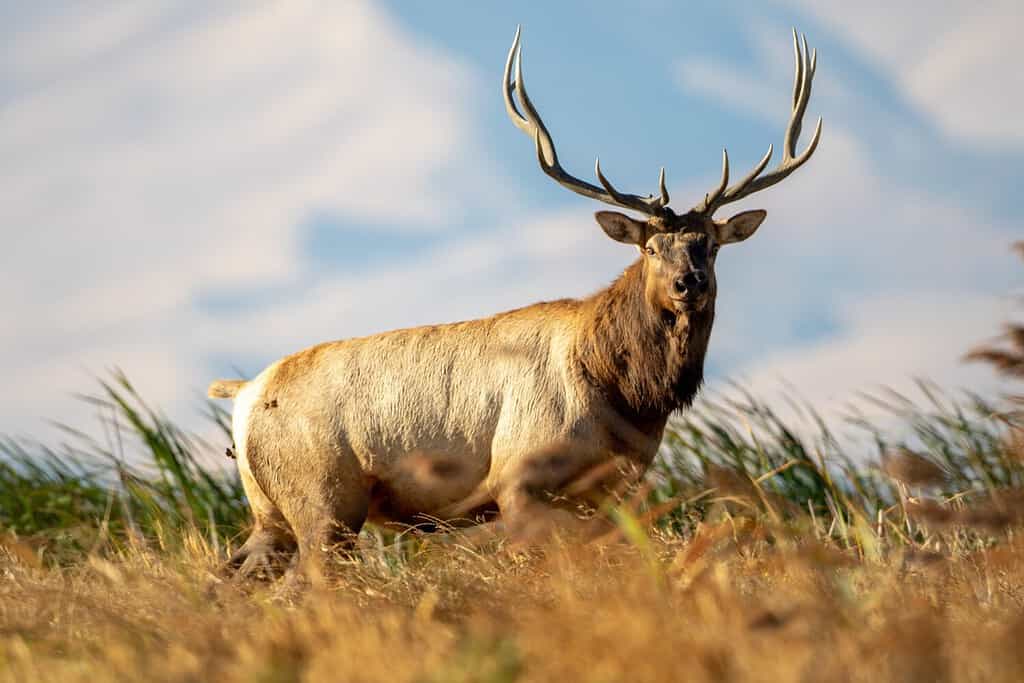
While marshy areas aren’t a long-term habitat for elk, they can provide access to much-needed water and grasses during droughts.
©RelentlessImages/Shutterstock.com
Not all elk are lucky enough to live near aspen groves or mountain meadows. In some cases, elk may also be found in lower altitudes in marshy meadows and along river valleys. These areas are full of grasses and reeds for elk to graze on and have plenty of water.
During droughts and dry spells, elk may travel to these areas for water and food. However, when it’s wetter, marshy areas are too wet for most elk to thrive in.
Semi-Desert Valleys
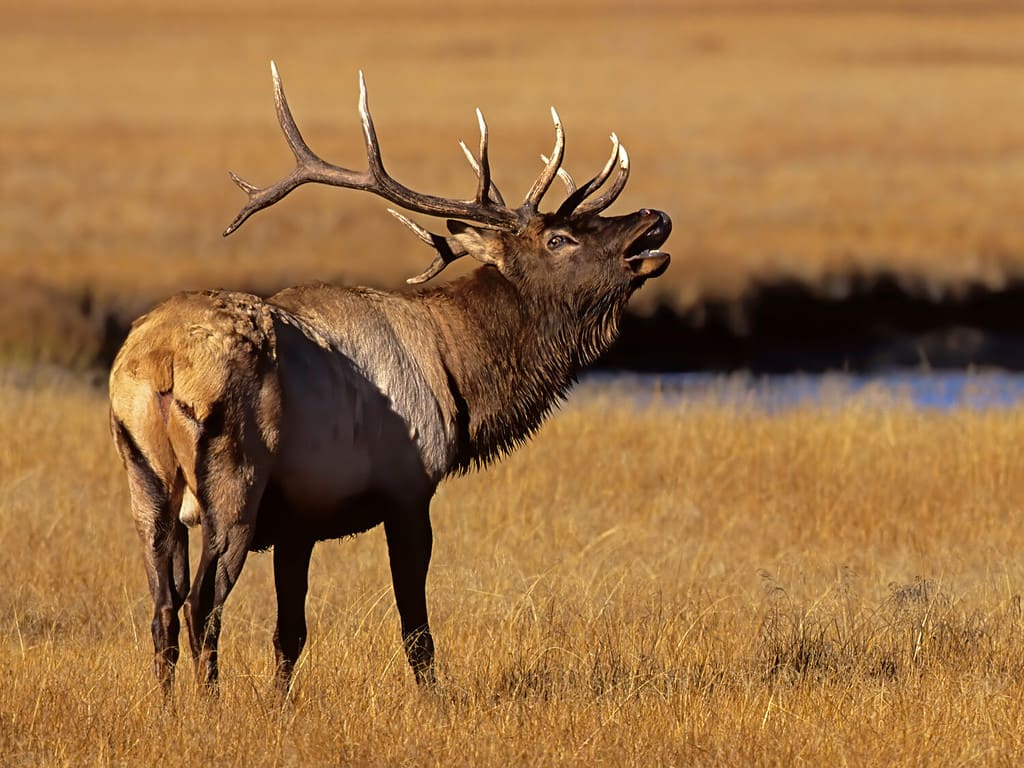
Dryer valleys can also provide grazing areas for elk, especially during wetter times of the year.
©Danita Delimont/Shutterstock.com
You can also find elk in drier areas, where they can browse on drought-resistant plants. Elk won’t be in these habitats quite as much as others, but elk herds may occasionally end up in them while traveling. They’re particularly fond of clearcuts, which often offer a range of grasses for them to consume.
Alpine Tundra
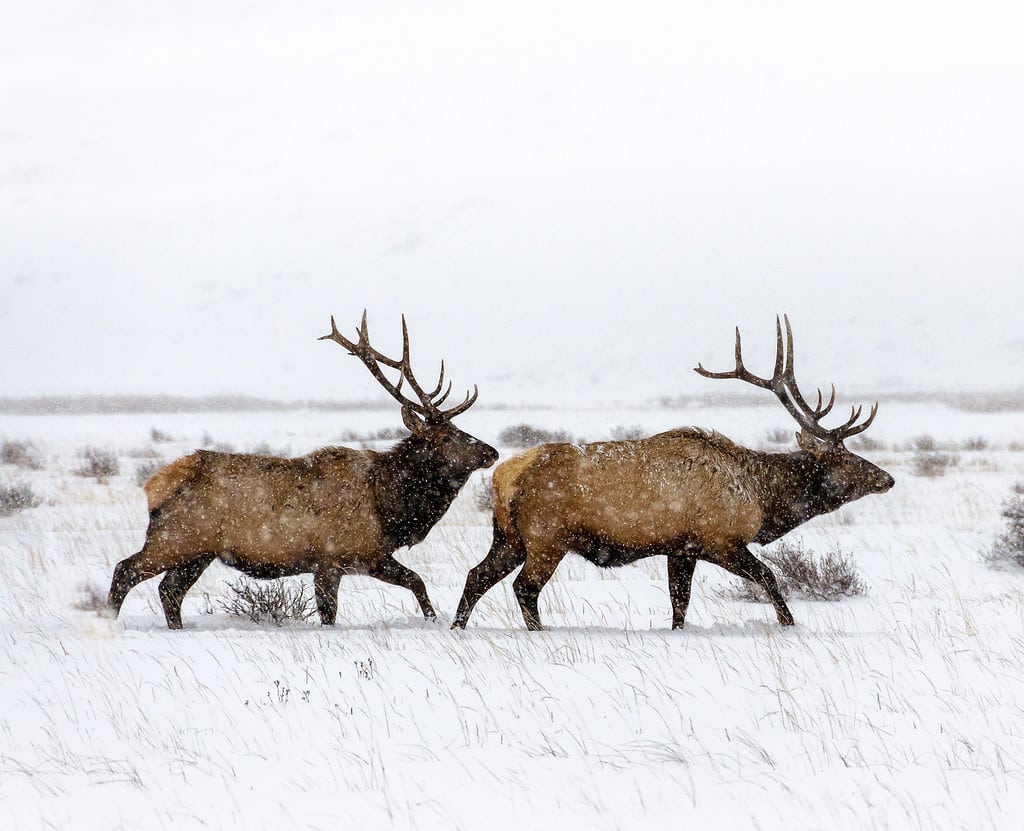
Elk can thrive in mountainous areas, but these species often have particular traits that allow them to do so.
©Zach Eisenhauer/ via Getty Images
Most famously, you can find elk in alpine tundra. While this is often where people think elk live, it isn’t actually their favorite habitat. Elk in alpine areas face extremely low temperatures, lower oxygen levels, and few food sources. Luckily, they can grow thick coats, which helps them stay warm.
In these high regions, they graze on lichen and mosses, as grasses aren’t often available.
Elk have large lungs and hearts, allowing them to survive in the thinner air. Their hooves also provide grip in the snow and rocky terrain. Elk in these areas are often smaller, as well, so they need less to eat than their lowland cousins.
Riparian Zones
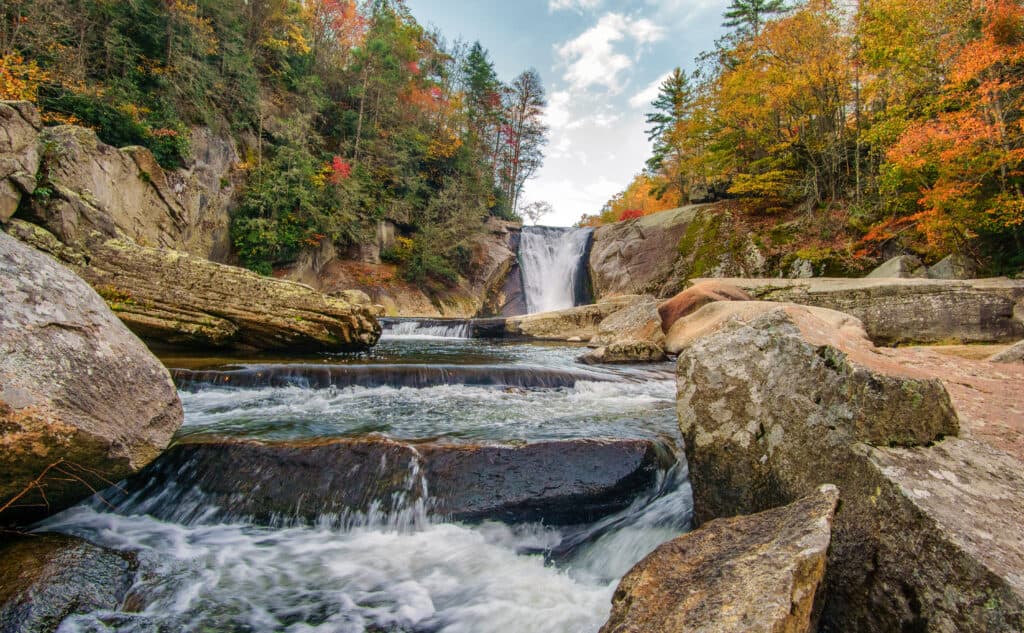
Rivers and streams provide much-needed water for elk and may also be the best grazing area during droughts.
©Craig Zerbe/Shutterstock.com
Riparian zones provide access to water, especially when upper regions dry out. Elk typically don’t hang out around rivers exclusively, but they will visit them for drinking – like most other forest species. Many river zones also offer vegetation for elk to graze on. Calving elk may also use the dense vegetation around rivers as a barrier against prying predators.
You’ll see elk most often in these areas during hot, dry weather when water is scarce elsewhere. However, during the spring and summer, they may also visit these areas for grazing.
Thank you for reading! Have some feedback for us? Contact the AZ Animals editorial team.





